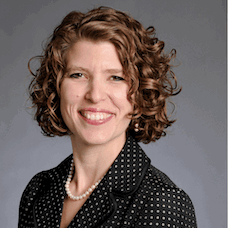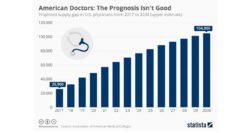Out-of-pocket costs are a reality of the health care system in the US. Americans pay nearly one-third of annual health care costs out-of-pocket, including employee benefit costs. Employee costs have risen faster than overall costs, and deductibles have doubled over the past 10 years.
Compounding the financial squeeze many Americans feel is the lack of discussion about what the costs are likely to be prior to treatment or service. Nearly half of Americans have received–and two-thirds worry about receiving–a surprise medical bill. In one survey, 70% of respondents wanted to talk with their doctor about costs, but only 28% had ever done so.
My collaborators and I sought to better understand this mismatch between consumer expectations for clear cost information and the reality of cost confusion. Using a natural language processing model (a computer algorithm) to analyze medical providers’ clinical notes about patient visits, we examined how often cost conversations occur in primary care settings.
We had previously applied this model to more than one million notes from intensive care unit encounters. We found 4.2% of patients’ medical record notes included documentation of financial considerations. We had expected to find fewer, assuming there would be no occasion for cost considerations in the most life-threatening situations.
We hypothesized preventive visits would be a more likely context for cost discussions and analyzed narrative notes from 222,457 primary care visits at an academic medical center, representing 46,244 patients. We found 13.1% of patients had at least one note reflecting a financial conversation with their physician. Financial discussions were more common among patients who were unmarried, Black or Hispanic, on Medicaid or Medicare, or residing in lower-income zip codes.
Clinicians should proactively ask all patients whether costs are a potential obstacle to treatment and invite patients to openly discuss their concerns.
In a random sample of notes with financial content, nearly half (48.7%) included a treatment change and 28.8% a medication change, suggesting that a discussion of cost triggers a re-evaluation of care in many cases.
These findings raise several critical questions. When physicians adjust treatment due to cost considerations, do patients receive comparable or degraded quality of care? If comparable, why don’t physicians always lead with lower-cost approaches? If degraded, how can we ensure equitable access to the most appropriate care amidst individual cost constraints?
Our study likely undercounts cost conversations because some may not be documented in the medical record, but our findings suggest clinicians can help mitigate patient cost burdens at times. Patients would likely welcome this assistance more universally.
Who should initiate these communications? Patients may be waiting for their doctors to open these conversations; they may fear that a cost conversation is inappropriate. Clinicians may not believe they have time for these discussions or to navigate insurance intricacies for each patient. Clinicians would need training and resources to engage competently and efficiently.
Our study did not answer any “should” questions. It did, however, illuminate a gap between information patients need and what they receive. Confusion over costs has clinical, not just financial, implications. Nearly 20% of patients may forego care when they are unsure of costs, and people who don’t understand their health insurance benefits are more likely to avoid needed care.
Recognizing costs–and confusion about costs–as increasingly common barriers to care can point us to appropriate interventions. Clinicians should proactively ask all patients whether costs are a potential obstacle to treatment and invite patients to openly discuss their concerns. Training doctors to engage in these conversations, just as they are trained for how to engage in other difficult conversations, is an important next step. These changes would likely lead to better documentation in clinical records and the best possible support of patients.
Photo by Shot by Cerqueira on Unsplash














